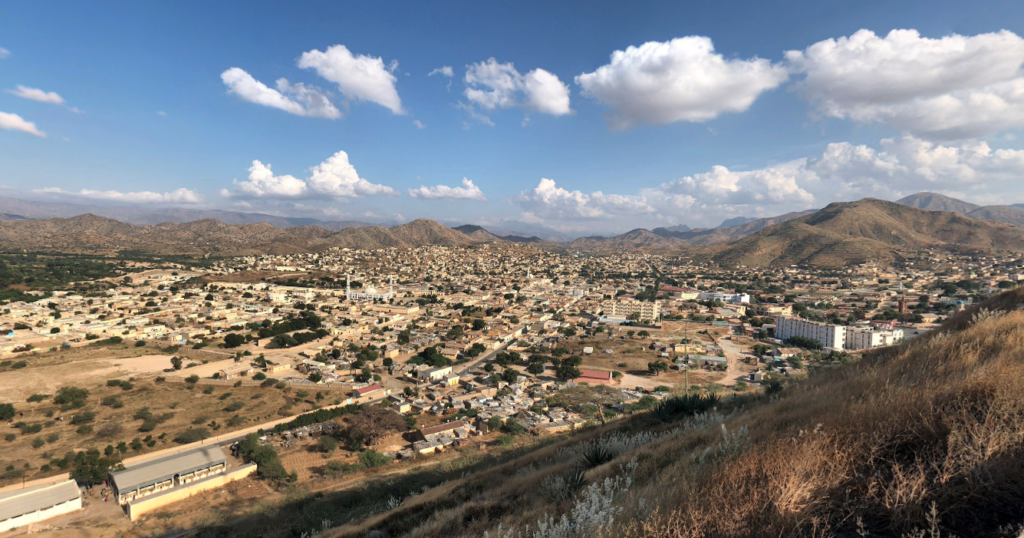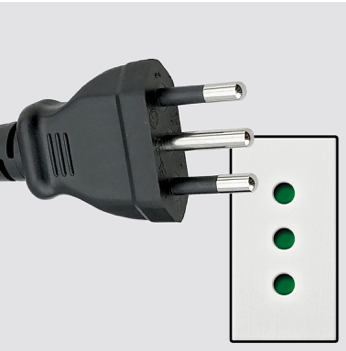Eritrea / State of Eritrea / ሃገረ ኤርትራ – Let’s explore here

What’s it like in Eritrea?
Eritrea is a beautiful, mountainous, country in east Africa. It is a similar size to Greece, and in the centre lies tropical forests and towering highland cliffs. The highest point is Emba Soira, at 9,902 ft (3,018 m) above sea level.
The population of Eritrea is around 3½ million poeple (2020), about two in five of whom live in the metropolitan area of the capital, Asmara. The capital, Asmara is one of the highest capitals in the world, at 7,628 feet (2,325 m) above sea level.
It shares land borders with Djibouti, Sudan and Ethiopia.

A bit about the history of Eritrea
Early History and Indigenous Groups
Eritrea’s history dates back to ancient times, with evidence of human habitation for thousands of years. The region was home to various ethnic groups, including the Tigre, Tigrinya and Saho peoples, among others. The ancient Kingdom of D’mt, established around the 10th century BC, is believed to have existed in what is now Eritrea and northern Ethiopia. The area later became part of the Aksumite Empire, an influential civilisation that controlled much of the Horn of Africa between the 4th and 7th centuries AD. After the decline of Aksum, Eritrea became part of various smaller kingdoms and empires.
Colonial Period
In the late 19th century, Eritrea became a target for European colonial powers. Italy claimed the region as a colony in the 1880s, following the defeat of the local Ottoman presence. The Italian colonisation was marked by the establishment of infrastructure, including railways and ports, but also by exploitation and suppression of the local population. Italy ruled Eritrea as part of its African empire until the defeat in World War II, after which Eritrea was placed under British military administration.
Federation with Ethiopia and Struggle for Independence
After World War II, Eritrea was made a trust territory under the administration of the United Nations. In 1952, the UN created a federation between Eritrea and Ethiopia, with the Eritrean government retaining a degree of autonomy. However, in 1962, the Ethiopian Emperor Haile Selassie dissolved the federation, making Eritrea an integral part of Ethiopia. This move sparked resistance from Eritrean nationalist groups, leading to the outbreak of a full scale war for independence in 1961.
The struggle for independence was led by several factions, the most prominent being the Eritrean Liberation Front and later the Eritrean People’s Liberation Front (EPLF). The war for independence lasted for 30 years and involved brutal military confrontations, resulting in significant casualties and displacement.
Eritrean Independence
After decades of guerrilla warfare and Ethiopian political instability, Eritrea’s struggle for independence gained international attention. In 1991, the EPLF, which had gained substantial control over the region, played a central role in the overthrow of the Marxist Derg regime in Ethiopia. Following the Derg’s defeat, Eritrea was recognised as a de facto independent state, and a referendum on Eritrean independence was held in 1993, with nearly 99% of the population voting in favour of independence. Eritrea formally declared its independence on 24 May 1993, with Isaias Afwerki becoming the country’s first president.
Post-Independence Challenges and Border War with Ethiopia
Eritrea’s early years of independence were marked by efforts to rebuild the country, which had been devastated by decades of war. However, tensions with neighbouring Ethiopia remained high over the status of the border, particularly the town of Badme. In 1998, a border war broke out between the two countries, resulting in tens of thousands of deaths and massive displacement. A ceasefire was reached in 2000, but the border issue remained unresolved for many years. The two countries did not officially resume diplomatic relations until the signing of a peace agreement in 2018.
Authoritarian Rule and Human Rights Issues
Under President Isaias Afwerki, Eritrea has been ruled as a one party state with significant restrictions on political freedoms. The government has been criticised for its lack of democratic institutions, the suppression of opposition groups, and widespread human rights violations. There are no independent media outlets, and dissent is often harshly punished. Many Eritreans have fled the country, seeking refuge in neighbouring countries and beyond, with reports of forced labour, indefinite military service and arbitrary detention.
Modern Eritrea
Eritrea remains one of the most isolated and repressive countries in the world. Its economy has struggled, largely due to the aftermath of years of conflict, poor infrastructure and international sanctions. Despite this, the government has sought to present Eritrea as a model of self reliance. The country maintains a strong military presence, and its political system remains firmly under the control of President Afwerki.


Eritrea road trip
Our Eritrean planned road trip takes us from Djibouti towards the capital, Asmara, before moving on to Somalia. Hopefully our journey will improve our knowledge of this intriguing and beautiful country, and enable us to meet some interesting people. We’ll be updating this page at that time – don’t forget to check back 🙂
Map of Eritrea

What’s it like to drive in Eritrea?
They drive on the right hand side of the road in Eritrea. In the main, roads are very poor, with many being unsurfaced dirt tracks. Driving standards are also poor.
Eritrea’s land borders with Djibouti and Ethiopia are currently closed (2024). Eritrea’s land border with Sudan is currently operational in response to the conflict in Sudan (2024).
Do you require an international driving permit in Eritrea?
We’ve created a dedicated page to driving abroad, which answers this question, and more, which you might find helpful.
Can you use your UK driving license when driving through Eritrea?
We’ve created a dedicated page to driving abroad, which answers this question, and more, which you might find helpful.
Do I need a carnet de passages to drive in Eritrea?
We’ve created a dedicated page to driving abroad, which answers this question, and more, which you might find helpful.
What currency do they use in Eritrea?
In Eritrea they use the Eritrean nakfa. Cash is widely used. US dollars are used for some hotels, remember to obtain a receipt if paying this way. The use of credit / debit cards is not accepted. Travellers cheques are not accepted. There are no ATMs.
You should make yourself aware of the amount that your bank charges you for using credit and debit cards abroad. Often credit cards are cheaper for purchasing items directly, and for withdrawing cash from ATMs.
What language do they speak in Eritrea?
They mainly speak Tigrinya, Tigre, and Arabic in Eritrea. English is starting to become more widely spoken, particularly among the younger generations.
What time zone is Eritrea in?
Remember, when you’re planning your next trip to take a look at what time zone it’s in.
Do I need a visa to visit Eritrea?
We’ve created a dedicated, more comprehensive page on visas, which you should find helpful. Check it out!
Is wild camping legal in Eritrea?
No, wild camping is illegal in Eritrea.
Health issues in Eritrea
What plug / socket type do they use in Eritrea?
In Eritrea they use plug / socket types C and E.


Is it safe to drink water in Eritrea?
No, it is not safe to drink tap water in Eritrea. Bottled water is readily available throughout the country.
What vaccinations are required for Eritrea?
This NHS website is kept up to date with all relevant information on vaccinations in Eritrea.
Phones in Eritrea
What is the country calling code for Eritrea?
The country calling code for Eritrea is +291
What are the emergency phone numbers in Eritrea?
- The emergency number for police in Eritrea is: 113
- In Eritrea, the emergency number for ambulance is: 114
- The emergency number for fire in Eritrea is: 116
If you’ve got some useful info that you’d like to share, let us know!
And don’t forget to check out all the other pictures!
